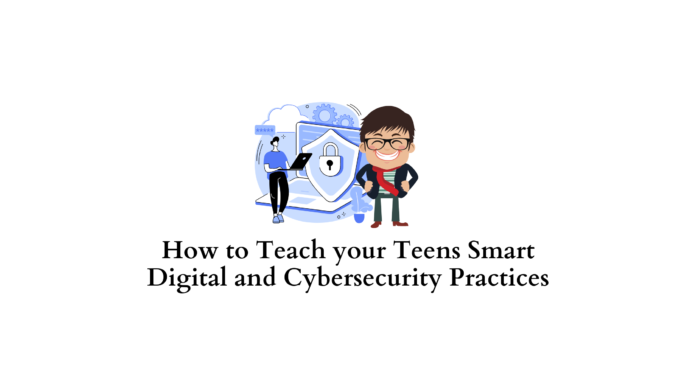Last updated - April 13, 2023
Technological development has a ground-breaking impact on almost all aspects of our lives. Both negative and positive outcomes are quite evident as the advancement goes on. The main concern is connected with the cybersecurity of children and teenagers. This is a hotly debated question among experts. Some claim that it is inevitable, while others think that taking stricter and appropriate measures can prevent teens from getting into a trap.
Moreover, raising awareness is another important thing that should be considered carefully. Not everyone knows that serious threats are connected to excessive Internet usage. So, what is cybersecurity, and what potential risks are connected with this ever-growing advancement? And how to help youngsters overcome those threats? You can also visit theteensafe.com for more information
What is Cybersecurity?
Cybersecurity supposes protection from digital attacks, which can cause potential problems. Hacking targets Internet users to steal, destroy, or change sensitive information. Soliciting illegal money from users is a common practice among hackers. Cybersecurity offers a multilevel protection system for common users or organizations. It works in three ways; first, it tries to detect the potential risks present in the system, then try to investigate it, and then finds ways to prevent it from causing future harm. People have certain ways to deal with this process by choosing stronger passwords, backing up the data from time to time, etc. Organizations such as banks and governments must be extra cautious since they are responsible for the safety of users’ data. Security measures are one of the main things that any individual pays close attention to. Here are some interesting statistics connected with smart device usage.
- 73% of teenagers do not imagine their daily life without a smartphone, tablet, or other smart devices.
- 44% of kids whose age ranges from 8 to 16 are constantly online. They prefer to spend their time with online friends rather than playing outdoor sports and games.
- 40% of children are inclined to reveal sensitive information to unknown users even without considering the potential risks of their actions.
- One-third of youngsters tend to lie about their age while using the Internet.
- 37% of kids have encountered some kind of cybersecurity problem like bullying, financial or physical threats, etc.
The statistics are really worrisome, especially when it refers to our children and their security. Before understanding how to overcome them, it is important to understand the risks by ourselves.
Types of Cybersecurity Threats
There are various types of cybersecurity threats.
Phishing
This process refers to sending fraudulent emails on behalf of reputable sources. The main aim of this is to steal card numbers, login information, or a password. This is one of the top problems that threatens every Internet user.
Social Engineering
This is a manipulation technique used by hackers to make their victims reveal personal data. By doing this, they may access your sensitive data, which can be used to solicit money.
Ransomware
This is a kind of malware program. This program does not allow the owner access to their data unless a ransom is paid. However, making a payment does not ensure they will reopen your data access.
Malware
If hackers want unauthorized access to your data, they will find a way to install a virus onto your system. You will be aware of its presence once your device starts doing suspicious things like crashing, showing undesired and annoying ads, etc.
The ones mentioned above are the most common threats, especially for teenagers, since they need more information about these adversaries and the threats caused by them.
What are Some Good and Smart Digital Habits?
Before understanding how to teach teenagers and young adults the awareness of digital cybersecurity, it is recommended to understand the habits that are essential for them to learn. Here are the top 8 cybersecurity-ensuring habits to adopt and teach your teens as soon as possible.
- Think twice before a link that seems suspicious such as it asks you to let you have access to your location when actually the application does not need that to operate. Even if the website looks familiar, you need to know what cookies you will allow while logging into the page. Also, never follow the links sent by messages; instead, follow the legitimate path. This especially refers to teens, since they are inclined to click on the websites that seem attractive to them. Teach your teens not to get into the trap by avoiding clicking on everything that pops up on the screen.
- Verify before sending any personal information: Tell your children to be cautious even if they get a message from someone they know well, check whether it has been sent by a friend or not because if the friend has clicked on a link containing a virus, the virus may send messages without the account owner even. Con artists know how to deceive people.
Why Internet Security Matters for Teens?
Young adults use the Internet and its features to communicate with their friends. Since the parent cannot control all the types that the teen does while being online, it is much preferable to teach what to share and what to trust. There are four main risks connected with online navigation. The first one is the content, and since teenagers are considered a vulnerable group in society, many hackers may target them. Pornography and sexually explicit videos, violence, drug advertising, etc, are the most common threats for youngsters in terms of content. The other one is cyberbullying, which can negatively influence teenagers’ psychology. Many hackers may even try to convince a teen to meet them in real life.
How to Teach Cybersecurity?
Since it is a digital era, it is impossible to forbid children to use smart devices and the Internet entirely. However, there are certain ways that we can ensure their safe surfing on the Internet.
- Grow awareness among children. If a child does not know what risks threaten them while using the Internet and what can happen if they do not follow the rules, they are unlikely to be cautious. Use child-friendly educational materials not to horrify but properly educate them.
- Make some Internet usage rules. For example, do not let a child install a game on the device without telling you. If they do not follow your recommendations, ask them not to play for some time, or allow them to play with you for a short time.
- Do not get stressed, but learn how to deal with such situations. Do not always try to scare them with real or made-up stories about con artists or hackers. Instead, create an environment where a child or a teen will feel safe to discuss problems with you rather than hide them.
- Use some tools to prevent teens’ access to certain websites by locking the access. Currently, there are many ways such as adapting the settings for child usage so you lock access to undesired websites, for example, such as the ones containing 18+ pictures or videos. Locking certain websites may help you prevent children’s access to materials that are not age appropriate.
- Tell them never to share sensitive information like parents’ banking accounts, card numbers, etc. with other Internet users.
Conclusion
Cybersecurity is critically important, especially in this sophisticated century where everything is connected to smart devices. Since this new generation is considered a digital generation, it is impossible to prevent them from accessing the Internet. Fortunately, there are some ways that you can teach your child how to navigate the Internet securely.











